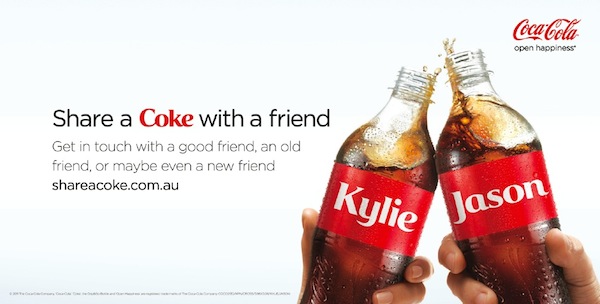Put your growth on autopilot
GrowSurf is modern referral program software that helps product and marketing teams launch an in-product customer referral program in days, not weeks. Start your free trial today.
Number two in our series investigating the core Principles of Persuasion Marketing as originally coined by Dr. Robert Cialdini. These principles, as the name suggests, outline the best ways to use psychological techniques that play on the most natural of human instincts in order to increase marketing effectiveness. Increase your marketing effectiveness and you’ll increase your conversion rate in no time.
The commitment and consistency principle is the second principle following the Principle of Reciprocity, otherwise known as the Norm of Reciprocity.
Dr. Cialdini theorized around how one can gain the loyalty and the respect of those who haven’t reached a high level of trust with you yet. How can we sell a product to someone who doesn’t know our brand from the next, and therefore can’t be sure that we’re the right fit? The conclusion that Cialdini reached was that the best way to encourage people to pass on their loyalty was to get them to commit to something consistently. That commitment could be a standpoint, their identity, their leanings or even a statement.
The theory leans heavily on the idea that, given the opportunity, our brains will take a mental shortcut and avoid the agony of choice. We like to keep things simple. If someone makes a single decision at one point in time, they will regularly go with the same choice again and again for simplicity sake. I tried the Baconator at Wendy's one day and now I always order the Baconator.

There are so many choices made in the mundane day to day lives that if we were forced to make a genuine choice each and every time we were faced with it then we wouldn’t ever get anything done. It’s how we end up eating similar breakfasts every day, or fall into cooking the same set of meals regularly.
"His behavior tells him about himself; it is a primary source of information about his beliefs and values and attitudes." Dr. Robert Cialdini
The statement here explores the second, fundamental aspect of the commitment and consistency principle, in that as an observer, an individual that acts in a consistent and regular (committed) manner is deemed to be stable and decisive. Those who constantly flit and change their minds are often deemed irrational and unhinged. This means that not only does commitment and consistency save some mental gymnastics, it also makes the person appear psychologically more attractive.
If it seems too much like hard work the people will avoid it. After all, this is a principle that relies on people taking the easy route through a decision process. In this principle, we want to start the marketing process by offering them small steps that often, incrementally, lead to bigger decisions (such as making a purchase).

This technique is often called the Foot in the Door technique, and it is exactly as it sounds. It’s an opportunity to get your foot in the door and get the customer interacting with you on a simple, easy level. These simple decisions or actions don’t push users into big decisions that require mental effort, instead they rely on more instinctive answers.
This is not to be confused with upselling, think of the used car salesman who encourages you to pay for a better model than you want, instead cross-selling is where you show people items that would go well with their current purchase. This is more like the, 'Often bought with', section that you see on eCommerce stores. You’ll also get these offers regularly appearing when purchasing larger ticket items such as electronic goods, then offering the aftercare package.
This is a far more innocuous method of encouraging people to purchase from you. You are, in this instance, acting as a facilitator. Large eCommerce stores such as Amazon do this tactic perfectly. They facilitate the ability to create, organise and share lists of products that they, themselves offer. The smart tactics come into play thanks to the lists being linked to your main account email. Meaning that should a price drop, or an offer launch on a product that is in your wishlist, you’ll start to receive notifications and reminders that now is a good time to buy.

The wishlist enables customers to live frivolously and add everything that they desire to a “nice to have'' list. This has far fewer barriers to entry versus actually adding a product to cart. Adding an item to cart implies that you’re right about to purchase it, and that feels like a larger decision, whereas just adding an item to a wishlist means that there’s no obligation to purchase.
Furthermore, should you go about sharing this list with others, they will, most likely, go for the easy option and purchase right there rather than shopping around and looking for different deals. Refer back to the foot in the door technique.
New Year’s Resolutions only really work if you tell someone about them. It’s a form of accountability. The same goes for if you get sponsorship for running a marathon or similar. Once the public commitment has been made you have the feeling that you will be held accountable for your actions and also feel compelled to complete the commitment. Referring back to the attractiveness of consistency, people don’t want to look flakey, or that they can’t stick to goals, therefore naturally want to be seen as someone who commits and is consistent. It feels bad to back down or drop out.
Gyms are fantastic users of public commitment, no one likes to feel shamed into backing out of a previously publicly made statement, especially when it is about fitness. 24 Hour Fitness encouraged their members to publicly commit and become part of their followers. This, in part, led to a massive 300 thousand new members through social referral channels.
In the marketing world, one would ask customers to show that they’re willing to align with your brand. Contests work wonders for this tactic, people are hoping to get something in return but only have to vouch for you by talking about your brand or share their fondness of your company.
User generated content or UGC, is a marketers dream. You’re getting the customers to do the work for you by sharing their work linked to a campaign that you’re doing. Now where this aligns with the consistency and commitment principle is in the work and effort that customers have to put into it. It might be as simple as just sharing a social post with a hashtag or it might be that they’re using your product to create something or customize it themselves. There is still effort happening here. They are still committing to your brand.
The theory is all well and good, but the interesting part is when we see how this applies in real life examples.
The foot in the door method needs to be simple, and reduce the complexity of the choice provided to the potential customer. ConversionXL nails this with a straight up Yes or No question on a small pop up.
The popup straight up asks them if they’re interested in 13 ways that they can increase their conversion rate immediately, Yes or No? They even drop in a little internal monologue piece under the No answer that says “ I’d rather keep spending $$$ on traffic that doesn’t convert” and there aren’t many people that would suggest that was a sensible course of action. Especially not if you want to be seen as a rational person.
Following signing up to the initial 13 Ways, customers are put into a funnel where ConversionXL let them know that they’re making the smart and intellectual decision by working with them.
ScreamingFrog is a UK based search engine marketing company, they deliver a whole host of different services and many people get to know them through their SEO Spider tool, which is a web crawler. The cross-selling happens when someone purchases one of their items of software as they have a whole host of complimentary services and packages which are offered at the right time and in the right place. Chances are that if you’re investing in a web crawler tool then you’re likely to be interested in technical SEO audits, SEO and more.

We briefly touched on this earlier in the article, but Amazon are the king of wishlists. They have spent a lot of time and effort understanding the psychology behind wishlists and have really taken them to the next level.
One of their key elements is their “Most Wished For” section. They show categories and rank items based on how many other people have added them to their wishlists, thus showing which items are currently hot on their marketplace. Furthermore, this list adapts dynamically across the site based on your browsing history and your own wishlist.
FitBit were able to use the public commitment technique to increase their user growth by 500% in just 7 years taking them from a $0 to a $9.7 billion valuation. One of the core elements to the strategy was to create a platform that enabled users to show off or share their athletic conquests. This, naturally, garners interest from their peers and the public commitment is made. Their peers now expect them to consistently use the technology and platform, furthermore the user expects themselves to remain loyal and consistent as well.
FitBit took this to the next level through their gamification of fitness. By creating small tasks or goals, such as Weekend Warrior or their Daily Showdown, people were expecting their friends and family to show up and then compete.
The Share A Coke campaign was able to drive massive amounts of sales through user generated content. The art was in the simplicity of the campaign. By simply placing a large variety of names across their range people were able to personalize their experience. They were also able to buy Cokes when they spotted their friend’s name on a bottle, snap a picture, share it through social media, use the #shareacoke hashtag and by that point, Coca-Cola’s marketing was being done completely by their users.

This also massively leant on the FOMO feeling, there were users searching in multiple shops just for their name or for a family member’s name. They wanted to be part of the in crowd, it also leverages the strong emotional ties that come from a personal experience and connection. The campaign was hugely popular, so popular that “1.25 million more teens tried a Coke during the following summer and sales of participating Coca-Cola packages rose by a phenomenal 11% in the US.”
Dr Robert Cialdini’s principle of commitment and consistency allows marketers to use psychological techniques that enable them to increase both the efficiency and effectiveness of their marketing campaigns. By encouraging users to be consistent and committed to their brand, those users will eventually become customers.
Read more about the 7 Principles of Persuasion:

GrowSurf is modern referral program software that helps product and marketing teams launch an in-product customer referral program in days, not weeks. Start your free trial today.
Want more conversions from your marketing? Start using social proof today! Here are 10 examples of how you can use social proof to increase conversions.
Social referrals are the not so secret weapon of 24 Hour Fitness. Learn how you can use social referral marketing to drive customers like they have since 2013:
Fitbit revolutionized a new industry of wearable tech, but how did they manage to get to their $9.7B valuation? Let's deep dive the Fitbit marketing strategy: